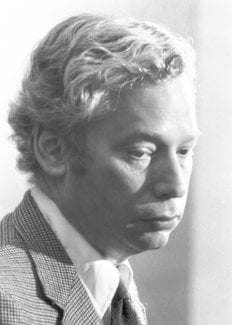Steven Weinberg
Biographical

I was born in 1933 in New York City to Frederick and Eva Weinberg. My early inclination toward science received encouragement from my father, and by the time I was 15 or 16 my interests had focused on theoretical physics.
I received my undergraduate degree from Cornell in 1954, and then went for a year of graduate study to the Institute for Theoretical Physics in Copenhagen (now the Niels Bohr Institute). There, with the help of David Frisch and Gunnar Källén. I began to do research in physics. I then returned to the U.S. to complete my graduate studies at Princeton. My Ph.D thesis, with Sam Treiman as adviser, was on the application of renormalization theory to the effects of strong interactions in weak interaction processes.
After receiving my Ph.D. in 1957, I worked at Columbia and then from 1959 to 1966 at Berkeley. My research during this period was on a wide variety of topics – high energy behavior of Feynman graphs, second-class weak interaction currents, broken symmetries, scattering theory, muon physics, etc. – topics chosen in many cases because I was trying to teach myself some area of physics. My active interest in astrophysics dates from 1961-62; I wrote some papers on the cosmic population of neutrinos and then began to write a book, Gravitation and Cosmology, which was eventually completed in 1971. Late in 1965 I began my work on current algebra and the application to the strong interactions of the idea of spontaneous symmetry breaking.
From 1966 to 1969, on leave from Berkeley, I was Loeb Lecturer at Harvard and then visiting professor at M.I.T. In 1969 I accepted a professorship in the Physics Department at M.I.T., then chaired by Viki Weisskopf. It was while I was a visitor to M.I.T. in 1967 that my work on broken symmetries, current algebra, and renormalization theory turned in the direction of the unification of weak and electromagnetic interactions. In 1973, when Julian Schwinger left Harvard, I was offered and accepted his chair there as Higgins Professor of Physics, together with an appointment as Senior Scientist at the Smithsonian Astrophysical Observatory.
My work during the 1970’s has been mainly concerned with the implications of the unified theory of weak and electromagnetic interactions, with the development of the related theory of strong interactions known as quantum chromodynamics, and with steps toward the unification of all interactions.
In 1982 I moved to the physics and astronomy departments of the University of Texas at Austin, as Josey Regental Professor of Science. I met my wife Louise when we were undergraduates at Cornell, and we were married in 1954. She is now a professor of law. Our daughter Elizabeth was born in Berkeley in 1963.
| Awards and Honors |
| Honorary Doctor of Science degrees, University of Chicago, Knox College, City University of New York, University of Rochester, Yale University |
| American Academy of Arts and Sciences, elected 1968 |
| National Academy of Sciences, elected 1972 |
| J. R. Oppenheimer Prize, 1973 |
| Richtmeyer Lecturer of Am. Ass’n. of Physics Teachers, 1974 |
| Scott Lecturer, Cavendish Laboratory, 1975 |
| Dannie Heineman Prize for Mathematical Physics, 1977 |
| Silliman Lecturer, Yale University, 1977 |
| Am. Inst. of Physics-U.S. Steel Foundation Science Writing Award, 1977, for authorship of The First Three Minutes (1977) |
| Lauritsen Lecturer, Cal. Tech., 1979 |
| Bethe Lecturer, Cornell Univ., 1979 |
| Elliott Cresson Medal (Franklin Institute), 1979 |
| Nobel Prize in Physics, 1979 |
| Awards and Honors since 1979 |
| Honorary Doctoral degrees, Clark University, City University of New York, Dartmouth College, Weizmann Institute, Clark University, Washington College, Columbia University |
| Elected to American Philosophical Society, Royal Society of London (Foreign Honorary Member), Philosophical Society of Texas |
| Henry Lecturer, Princeton University, 1981 |
| Cherwell-Simon Lecturer, University of Oxford, 1983 |
| Bampton Lecturer, Columbia University, 1983 |
| Einstein Lecturer, Israel Academy of Arts & Sciences, 1984 |
| McDermott Lecturer, University of Dallas, 1985 |
| Hilldale Lecturer, University of Wisconsin, 1985 |
| Clark Lecturer, University of Texas at Dallas, 1986 |
| Brickweede Lecturer, Johns Hopkins University, 1986 |
| Dirac Lecturer, University of Cambridge, 1986 |
| Klein Lecturer, University of Stockholm, 1989 |
| James Madison Medal of Princeton University, 1991 |
| National Medal of Science, 1991 |
This autobiography/biography was written at the time of the award and first published in the book series Les Prix Nobel. It was later edited and republished in Nobel Lectures. To cite this document, always state the source as shown above.
Steven Weinberg died on 23 July 2021.
Nobel Prizes and laureates
Six prizes were awarded for achievements that have conferred the greatest benefit to humankind. The 12 laureates' work and discoveries range from proteins' structures and machine learning to fighting for a world free of nuclear weapons.
See them all presented here.
